The tradition of new clothing for Easter stems from the Church itself, as the newly baptized would wear new white robes. Easter colors later shifted from white to any hue, especially red, and came at least to our traditional pastel palette, more prevalent after the Edwardian period.
Dresses became less multi-purpose, a necessity especially seen in the 19th century, when clothing would be adapted and modified for each season as though it were new. In such times, colors less specific to Spring may have been preferred.
We’ve found that for the most part, women’s church attire tended to be comprised of their best day dress or a tea dress, pumps or Mary Janes, and a hat, though veils were sometimes worn instead. Women belonging to the upper classes frequently wore gloves, while women of the lower classes usually did not during the Edwardian period. Bonnets of many styles were an Easter tradition, often covered with flowers. From the few pictures we’ve seen of Catholic Masses, veils were not visible in the sea of hats, though many vintage hats themselves had some type of veil of netting.
While many available images of ladies on Easter are for private use, below are images of Spring fashions that likely fit Easter attire.
Early Edwardian:
Early Edwardian dresses tended to be ethereal, sculptural creations, with voluminous skirts in delicate yet sturdy fabrics. A 1904 newspaper recommends, with utmost specificity as to the details of the gown, an Easter dress in “pansy” purple, with a deep blue coming in second.1 Purple and blue seem to have been popular in much of the first decade, and images of fabrics in the 1910’s continue the trend, with pale pinks, blues, purples, and the occasional pastel green or yellow. Particular shades in lighter hues included pastel blue, light blue, yellow, pink, rose, and turquoise.2
Easter hats were a serious affair in the Edwardian period. Hats were a staple at any time, extravagant and picturesquely massive, but for Easter, it was nearly a requirement to have a new one. Chiffon, tulle, and flowers were common materials. Hats ranged in size from massive to much smaller, enabling women of all economic classes to obtain hats of their own.
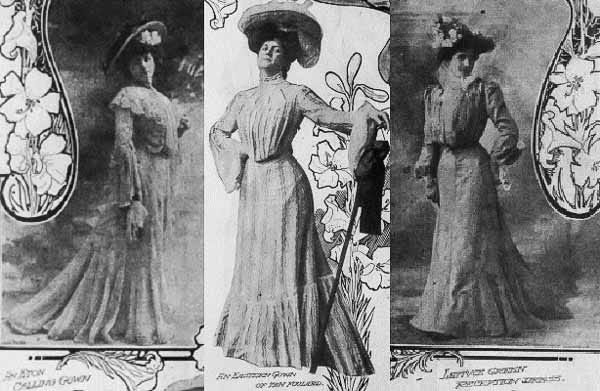
Below is a wedding photo dated to 1903. The bride’s dress and hat are elegant yet practical, characteristics that were typical of Edwardian attire. Edwardian women would often repurpose their clothing, dyeing everyday dresses to make them appropriate for church or even weddings. Consistent with what we noted above, the woman in the photo wore this lovely hat instead of a lace veil for her Catholic wedding.
Late Edwardian: The Titanic Era - pre-World War I
In the second decade, the silhouette slimmed, a trend which would be continued in the 1920’s. The dedication to hats, however, was unchanged, and the color profile remained similar to the previous decade, with lavender, wisteria, and coral as some newer popular shades. Similar to the earlier years, upper-class women wore gloves for social events, while the lower classes rarely did.
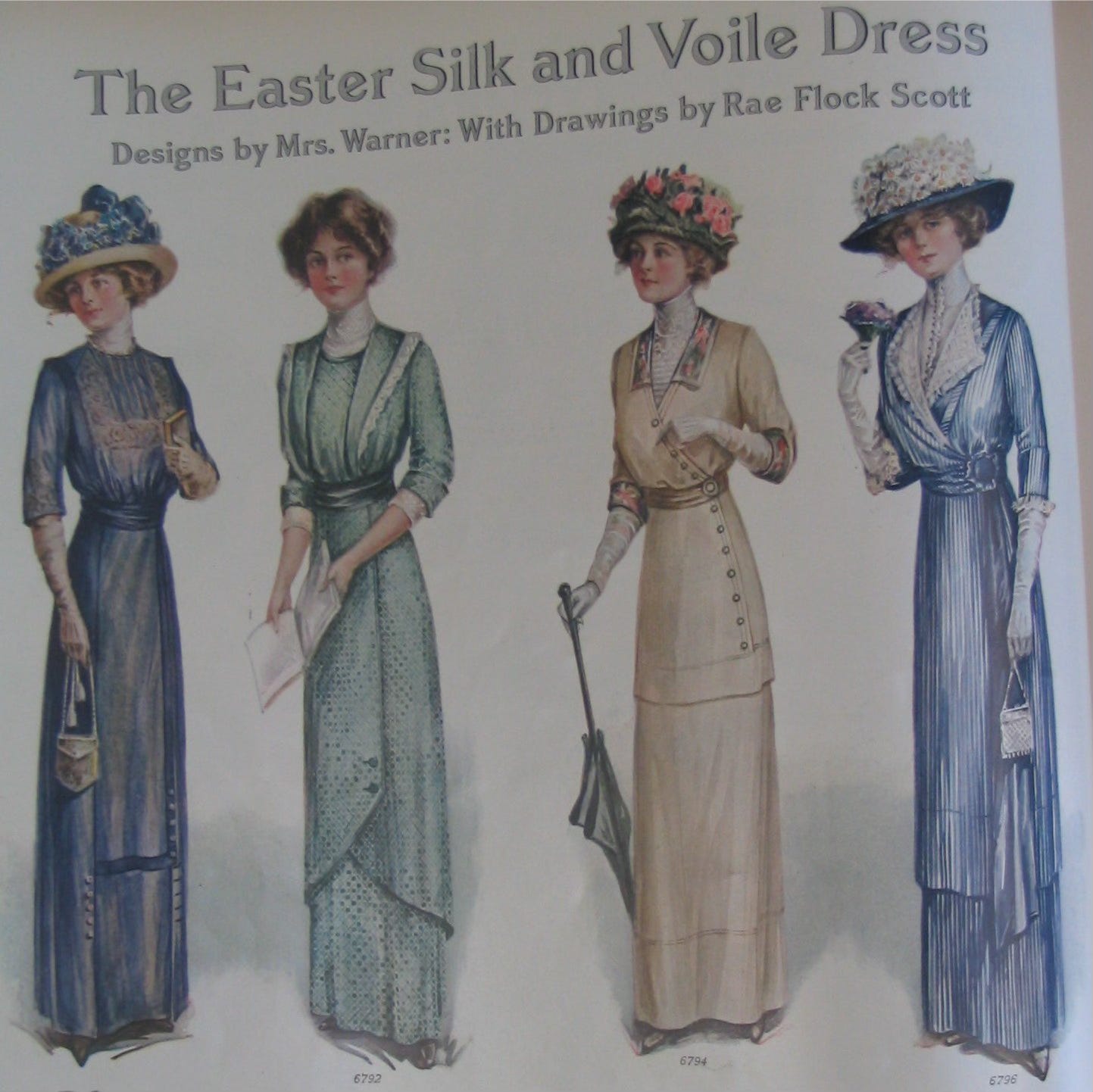
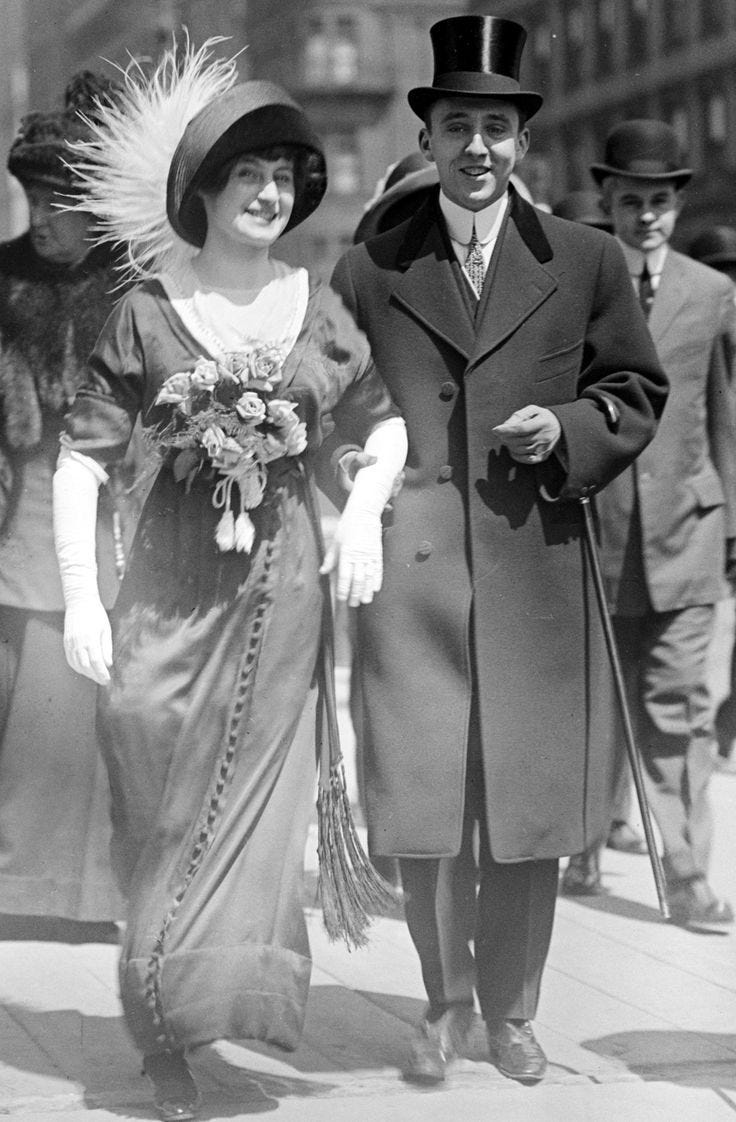
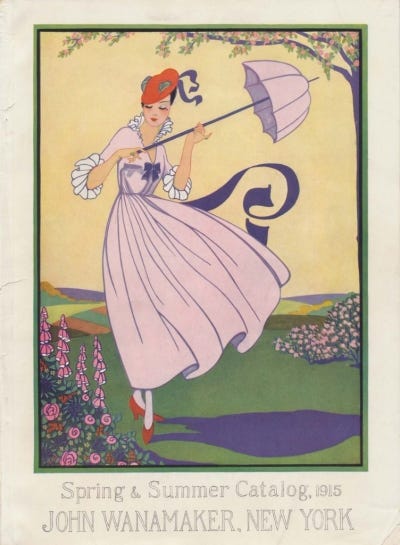
The 1920’s
“Surprisingly, wearing Sunday’s best was not part of the ’20s culture. . .whatever she wore for streetwear / afternoon attire she also wore to church, as long as it was modest with long sleeves and a below the knee hemline. If a sleeveless dress was worn, a light shawl, wrap or jacket acted as a light coverup. Simple, non-distracting clothing was appreciated. . .Women were required to wear a hat, gloves, and a matching purse. These three accessories polished her look and gave her permission to add personality to an otherwise conservative dress.”3
This contradicts the typical image of the 20’s, when daring fashions took over and replaced millennia of (mostly) sweeping or ankle-length dresses. Femininity was lessened for a more boyish look and silhouette.
Favored colors suitable for Easter included rose, emerald green, violet, dusty peach, medium blue, and faded yellow.4
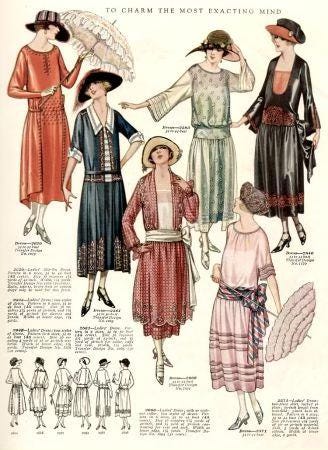
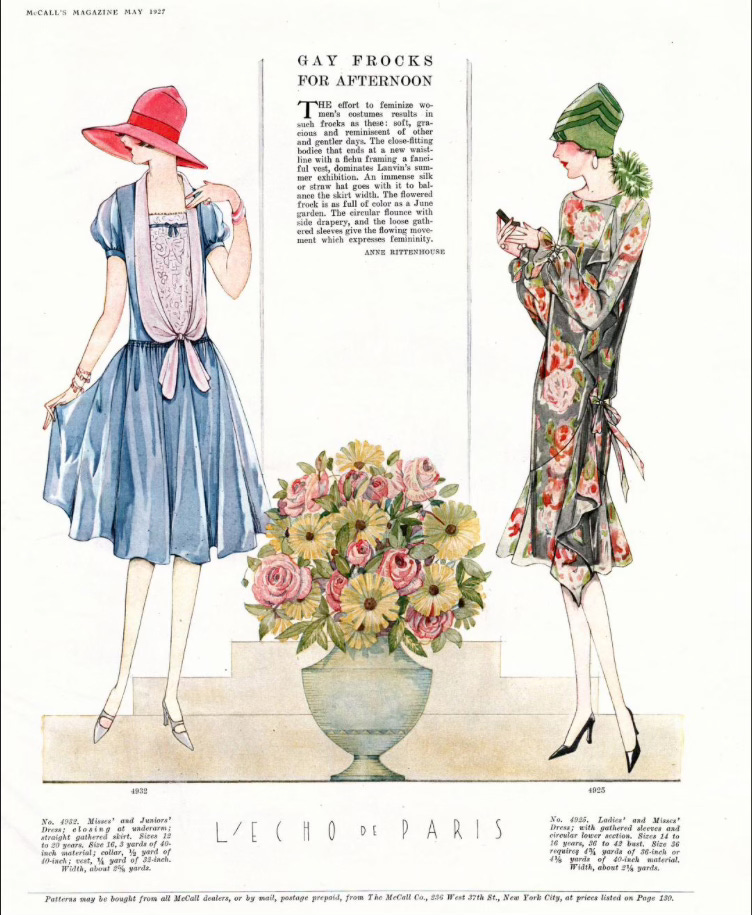
Stay tuned for Part II on the 30s-50’s on the 25th, followed by Part III, a bonus post of our favorite dresses throughout the decades!
Sources referenced:
https://www.sensibility.com/blog/blog/reproducing-1912-fashions-remember-titanic/
https://vintagedancer.com/1900s/edwardian-fabrics-1900-1919-ww1-titanic/
https://www.sewhistorically.com/how-to-dress-in-the-edwardian-era/
https://vintagedancer.com/1900s/titanic-fashion-1st-class-women/
https://www.sewhistorically.com/edwardian-easter-gowns-for-the-easter-parade/
https://www.sewhistorically.com/edwardian-easter-hats/
https://vintagedancer.com/1920s/fabrics-and-colors/
https://vintagedancer.com/1920s/1920s-afternoon-dresses/
https://vintagedancer.com/1920s/when-to-wear-what-in-the-1920s/
https://vintagedancer.com/1940s/1940s-capsule-wardrobe-what-clothing-cost/
https://www.sewhistorically.com/edwardian-easter-gowns-for-the-easter-parade/
https://vintagedancer.com/1900s/edwardian-fabrics-1900-1919-ww1-titanic/
https://vintagedancer.com/1920s/when-to-wear-what-in-the-1920s/
https://vintagedancer.com/1920s/fabrics-and-colors/






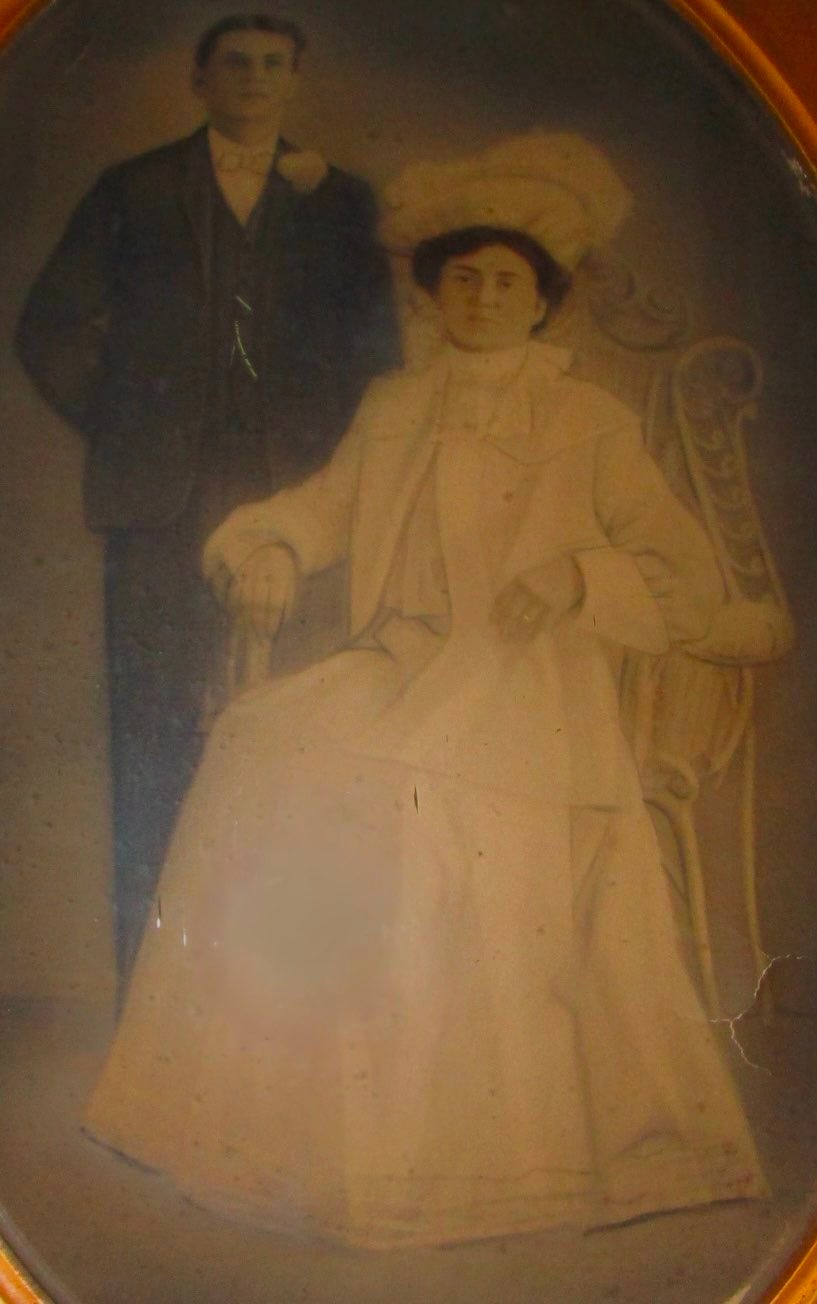

I love the 1921 dress in the photo! Her shoes, too. I have to get Easter dresses together for my daughters still, or I would be taking notes...
Yes, veiling (in the US at least) is a fairly new phenomenon. I'm not even sure that the chapel caps for schoolgirls go back past the late '40s. (I do have some 1900s family wedding photos with the brides in elaborate lace headdresses, but the whole bridal outfit looks late-Victorian, so I believe they'd brought that over from the old country.) I really wish I could figure out better how to integrate hats into the vintage-fusion style I wear now - the nice thing about veils is that it really doesn't matter what you do with your hair.
Lovely! Sometimes I can't help but wish we could go back to those times if only in terms of fashion.